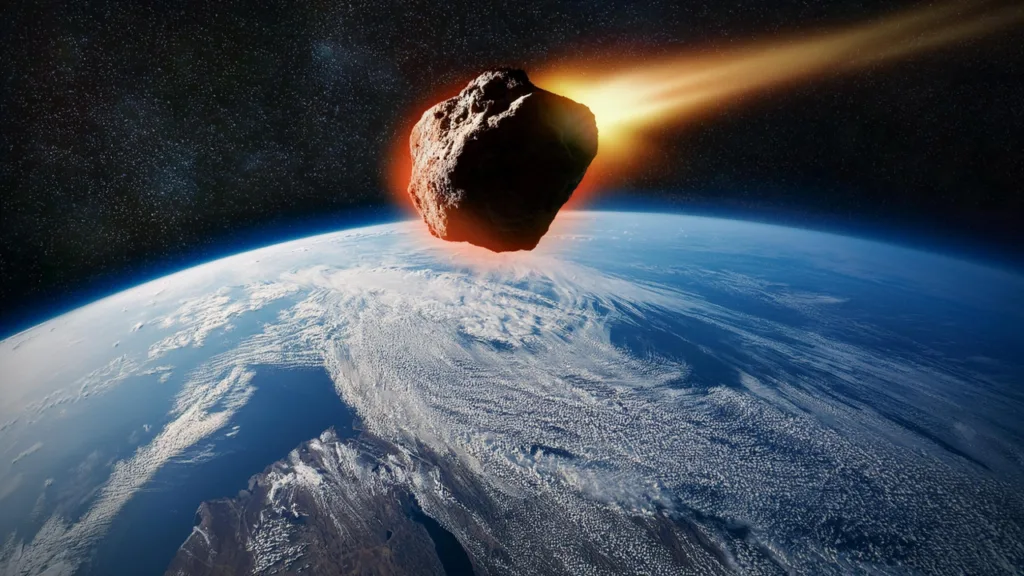astronomy
Near-Earth Object 2024 UQ: A Close Call from the Cosmos

In a remarkable demonstration of both the unpredictability of space and the extraordinary capabilities of modern astronomical detection, a small asteroid, designated 2024 UQ, recently made headlines after it struck Earth just hours after being identified. This event, which took place on October 22, 2024, marks the third “imminent impactor” recorded this year, highlighting the continual and often daunting reality of near-Earth objects (NEOs).
Discovered by the Asteroid Terrestrial-impact Last Alert System (ATLAS) in Hawaii, a network of four telescopes dedicated to scanning the night sky for potential collision threats, 2024 UQ was small—measuring only about 3 feet (1 meter) in diameter. While news of an asteroid making contact with Earth can evoke concern, there was no cause for alarm in this instance. The diminutive size of the asteroid meant that it posed very little threat to anything on the ground. In fact, it burned up in the atmosphere over the Pacific Ocean near California, leaving no trace or damage.
However, the swift timeline of events raises critical questions about the effectiveness of our current monitoring systems. The impact occurred just two hours after the initial detection, which meant that by the time data was transmitted to the impact monitoring systems operated by the European Space Agency’s Near-Earth Object Coordination Center, the impact had already taken place. According to their November 2024 newsletter, the ATLAS survey had successfully obtained images identifying the asteroid on a collision trajectory, but due to its position near the edge of two adjacent observational fields, it was not recognized as a significant threat until it was too late.
This incident serves as a reminder of the complexities involved in tracking and predicting the paths of NEOs. While advancements in technology have undoubtedly improved our ability to detect these celestial objects, the circumstances surrounding 2024 UQ showcase the potential for oversights in our monitoring capabilities. Despite this event being minor in scale, it emphasizes the importance of continued investment in space surveillance systems, as well as international collaboration in tracking potential hazards lurking in the vast expanse of space.
As we look forward, this close encounter reaffirms the need for vigilance in our exploration and observation of the cosmos. Each NEO presents an opportunity for learning and growth in our understanding of near-Earth dynamics. While 2024 UQ may have come and gone without incident, it certainly sparks curiosity about what lies ahead in our ongoing quest to safeguard our planet from the skies.
Reference Links:
Asteroid Terrestrial-impact Last Alert System (ATLAS): https://fallingstar.com/
The Danger from Asteroid Impact: https://fallingstar.com/danger.php
The science section of our news blog STM Daily News provides readers with captivating and up-to-date information on the latest scientific discoveries, breakthroughs, and innovations across various fields. We offer engaging and accessible content, ensuring that readers with different levels of scientific knowledge can stay informed. Whether it’s exploring advancements in medicine, astronomy, technology, or environmental sciences, our science section strives to shed light on the intriguing world of scientific exploration and its profound impact on our daily lives. From thought-provoking articles to informative interviews with experts in the field, STM Daily News Science offers a harmonious blend of factual reporting, analysis, and exploration, making it a go-to source for science enthusiasts and curious minds alike. https://stmdailynews.com/category/science/
STM Daily News is a vibrant news blog dedicated to sharing the brighter side of human experiences. Emphasizing positive, uplifting stories, the site focuses on delivering inspiring, informative, and well-researched content. With a commitment to accurate, fair, and responsible journalism, STM Daily News aims to foster a community of readers passionate about positive change and engaged in meaningful conversations. Join the movement and explore stories that celebrate the positive impacts shaping our world.